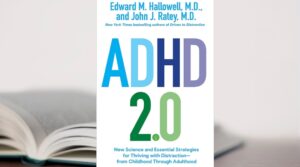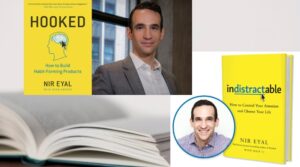Attention
Attention
The technology we use is changing how we think, our attention capacity and what we focus on. This directly impacts our levels of productivity and effectiveness within the workplace. Our workplace norms, technological business models and societal norms encourage us to spend as much time as possible in front of a screen.

If you have watched The Social Dilemma, you will have gained an insight into the business models of the technology giants. Knowing what tech they restrict their children from using is an interesting insight in itself. Because they know that the technology is addictive. They’ve designed it to be. The objective is to keep our eyes glued to our screens and keep us scrolling. And the longer we are engaged with their apps, the more money they make. The saying is true ‘if you haven’t paid for the product, you are the product’.
The consequence of us using apps like social media, which keeps our eyes skipping from one item to the next every few seconds constantly consuming quick-firing entertaining media, trains our brains to keep our attention skittish and surface level. In doing so, we spend less and less time engaged in deep, contemplative, critical thinking, and engaging conversations. From a neuroplasticity point of view, the fast-paced entertainment part of the brain is strengthened while the deep thinking part of the brain is weakened.
This is especially important to consider for those who use technology to fulfil their job function. We need to recognise that the technology we use is changing how we think and how we process information. It is captures our attention and reduces our ability to focus. Both personal and work-based notifications can distract us. An article from The Guardian in December 2020, highlights research on the impact of notifications points out that, the cognitive effort required to ignore a notification can be mentally draining – wondering what they want and thinking about it until replying.
Technology is capturing our attention and reducing our ability to focus. Both personal and work-based notifications can distract us. In another article from December 2020, highlighting research on the impact of notifications, points out that the cognitive effort required to ignore a notification can be mentally draining. If you receive a notification and can’t reply for a while, you end up wondering what your friend has to say and think about it until replying.
In his book ‘The Shallows’, Nicolas Carr showcases how dependent we have voluntarily become on technology and how technology is constantly rewiring our (neuroplastic) brains.
Digital detoxes provide a temporary salve to our technology habits. Long-term tech habits, however, require conscientious, continuous steps being taken every day to make a more permanent change to how we engage with technology.
With technology becoming such a key part of our daily living, our attention is being eroded by the use of the same technology that enables us to be more ‘in-tune’ with others and the world around us. We need to become more strategic and tactical in what we allow our attention to be focussed on.
Our brains have limited ability to process the bombardment of incoming stimuli from all of our senses. This is because, the attention that we give to specific stimuli is associated with a process of ‘selection’ i.e. what we pay attention to determines how we allocate our cognitive resources.
This is efficiently demonstrated in a study by an experiment involving ‘The Monkey Business Illusion’. If you haven’t seen this before, it may surprise you how little you notice the first time you watch the video.A number of other experiments have also been conducted, such as that of Simons and Levin (1998) on change blindness. The experiment showed how few people truly take note of the appearance of a stranger asking them directions and, therefore, how much we truly pay attention to.
A few theories help us to understand more about how our attention works:
- Limited Capacity Theory: suggests that the amount of cognitive processing resources allocated to attention is finite.
- Multiple Resource Theory: suggests different pools of cognitive resources process different types of incoming stimuli e.g. one pool allocated to sound, another to sight and another to touch.
- Attentional Spotlight Theory: is where our cognitive effort is focussed on what our eyes (or our ears) are registering. This can either be concentrated on a small area or lightly spread over a larger area. This theory suggests we can control what we are paying attention to.
Our attention can shift, depending on its meaningfulness to us. Think of those times when we are in the middle of a conversation and we hear our name in another conversation. Our attention shifts dramatically to hear what is being said in the other conversation to the point that we are no longer listening to the person talking to us.
It is up to us as individuals to take back control of our technology use. We need to take a more active, personal role in managing our own attention, rather than subcontracting the responsibility to the government and tech companies.
Start with small changes.
- Turn off all as many notifications as you are able to – even starting with turning off the notifications from one app every day
- Take scheduled tech breaks each day and use the time to do something else completely different – pick up a book, go for a walk, head out into the garden, start a new (non-tech) hobby. Start with short chunks of time and make them longer as you get use to time away from screens
- Aim to call or meet up with one person a week rather than send them a message
- Don’t put your phone on the table when meeting up with someone – put it in your bag if you have one with you
- Don’t look at your phone during mealtimes – use that time to talk to someone else or focus on the food you are eating
- Try leaving your phone in a room where you don’t sleep at night – try keeping a notepad by your bed and start writing down things you are grateful for or a ‘to do’ list each evening &/or morning.
Creating good tech habits is like creating good eating or exercise habits. It takes energy, determination, and persistence. There is no ‘silver bullet’ to this and like asking the food industry to stem the tide of obesity, trying to get the tech industry to reduce our reliance on tech is probably not the solution we would hope it would be.
Wendy Suzuki, a neuroscientist who studies the effects of exercise on our brain, has shown that long-term exercise can help us with improving our attention.
A great reason to use a scheduled ‘tech break’ for increasing the exercise you do.
Slightly outside of the realm of the topic of attention, other benefits of exercise on the brain is improved pre-frontal cortex and hippocampus functioning.
The prefrontal cortex is the ‘work-horse’ of the brain. It is where information is held, processed and where risks are assessed and decisions are made. An interesting fact about the prefrontal cortex is that it only fully matures around 25 years old – which helps to explain why younger people are prone to making riskier life-decisions.
The hippocampus is where spatial and some longer term memory is stored. Studies done on London Taxi drivers have shown larger than average sized hippocampus, which is due to their having to know every street in London, how to navigate there from memory.
If you are interested, you can watch the talk below.






